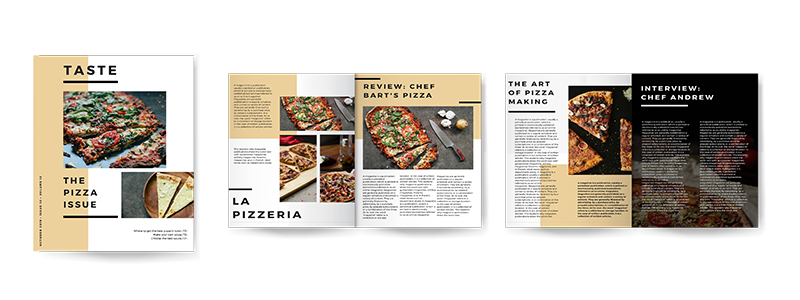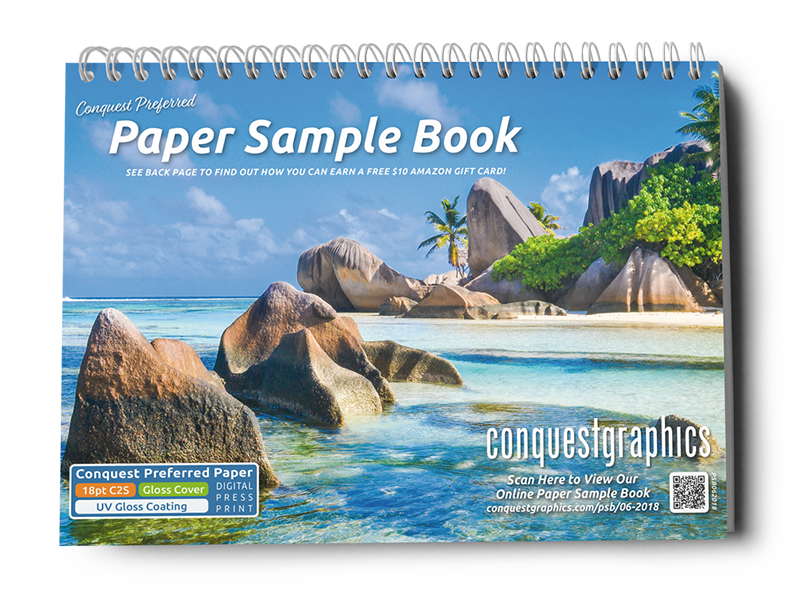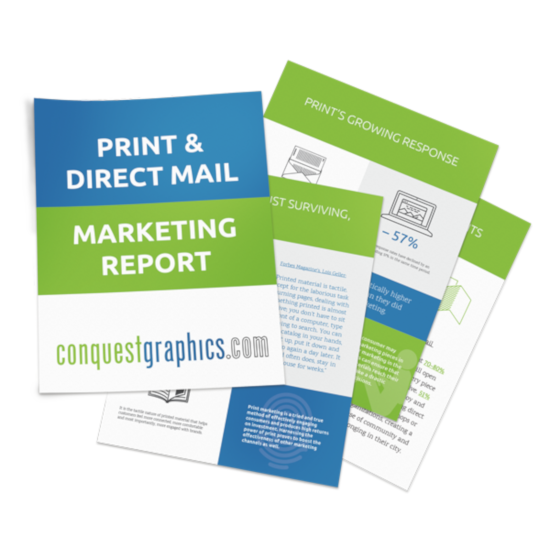
Creating a high-quality catalog may seem overwhelming and expensive, but it doesn't have to be. There are many strategies that can help you create a professional catalog with even the smallest budget. Remember, catalogs aren't just pages promoting your products. They're powerful marketing tools that drive sales and increase awareness around your products, services, and brand.
Here are some budget-friendly tips on creating, printing, and mailing your catalogs so you can gain the many advantages of catalog marketing without spending a fortune.
Strategizing Your Catalog Campaign
Determining your budget is the first step in creating an effective and affordable catalog campaign. This first step will allow you to more easily align your next steps of the process to be within that budget.
Next, define the purpose of your catalog. Do you want to inform your audience, build brand awareness, drive website traffic, or advertise your products or services? Once you have identified your catalog marketing goals, you can decide what information or products you want to highlight or which services you want your reader to be more aware of.

In addition to determining the purpose of your catalog, you need to define your target audience. Defining your target audience is incredibly important because it will help you tailor your catalog design and content to your specific audience.
With your budget, goals, key offerings, and the audience identified, you can choose the catalog type you need. There are many types of catalogs, including informational, promotional, product, and service listings.
Informational catalogs are text heavy and aim to educate or inform the reader. On the other hand, promotional catalogs are image-heavy and include advertisements for specific products or services. Product catalogs highlight each product visually and entice the reader the purchase, while service listing catalogs list and advertise the services offered by your business.
Finally, you need to know how you will deliver your catalogs to your audience. Will they be a part of a catalog direct mail campaign, handed out at a trade show or event, or left behind for potential customers to grab at a local shop? Figuring out how your readers will receive your catalog determines the type of messaging you should include within your catalog design, and it will also determine how much money you need to pull from your budget.
So, strategizing your catalog campaign to ensure a successful, affordable, and revenue-generating outcome includes:
- Determining your budget
- Defining your catalog marketing goals
- Knowing who your target audience is so you can tailor your content to them
- Outlining the essential products, services, or information that you want to highlight
- Choosing the type of catalog you need: informational, promotional, product, or service listing
- Deciding on a distribution game plan
Writing Your Catalog Content
Engaging content is critical to an effective catalog campaign. While striking photos and imagery capture attention, powerful headlines, and intriguing descriptions reel readers in, compelling them to purchase or contact you to learn more.
When writing your headlines, keep them short yet enticing. Your goal is to create curiosity and interest to invite your reader to read more. For the descriptions or main copy, if your catalog is mainly about the photographed products you are selling, you want the copy to be clear and concise, but you also don't want it to overpower your images. Keep your copy brief and compelling, and always make sure it aligns with who your audience is.

Knowing your audience is essential for your catalog writing process. Are your offerings targeted to a younger demographic or intended for high-end professionals? Regardless of your target audience, your catalog should reflect their interests and mirror their tone and communication style. Do some research and find out your consumers' interests and how they talk about your products or services. Knowing their interests and how they speak of your industry can help you decide on the right language.
If your goal is to sell something or make your offers attractive, describe what they'll do and their benefits for your readers rather than just list what they are. For example, if you're selling organic toothpaste, what are the natural ingredients, and how will using your toothpaste help your customer and the environment?
In summary, when writing your catalog content, you need to:
- Write eye-catching headlines
- Write compelling service or product descriptions
- Tailor your tone to align with your target audience
Designing A Catalog for Your Small Business
Designing a catalog requires a lot of planning and thought to create a design that stands out and often requires a professional graphic designer to get everything set up perfectly. However, hiring a designer ultimately increases the price. At the end of the day, if you aren't confident with designing your own catalog, or don't have an internal design team, make sure to find a printer who offers design services at a reasonable price so you can guarantee a catalog design that will generate the most revenue.
Below are a few design tips that can help you create an effective catalog:
Choosing a Typeface for Your Catalog Design
Choosing a typeface that aligns with your brand, is easy to read, and reflects who your audience is, is incredibly important.
Cambria and Times New Roman are common, proven serif typefaces for print marketing. However, they are also considered classic or traditional, which may not align with your target demographic or brand. On the other hand, sans-serif fonts like Calibri or Verdana are considered more modern, minimalist, and casual. For example, an antique store could reflect its vintage aesthetic with an old-style serif like Garamond, a toy store with a younger audience as their target demographic could use something more playful like a Futura font, and a marketing agency promoting modern strategies could use a sleek sans-serif font like Abadi.
It is also essential that your typeface is consistent throughout your design. If you use a serif type on one page and sans-serif on another, your design won't flow cohesively. Mixing 2 or 3 typefaces can add impact if it makes sense for your brand, but they need to be consistent throughout. For example, if your headers are one typeface and your body text is another, ensure it stays consistent throughout your entire catalog.
Adding Negative Space is Positive
Cluttered pages can be visually overwhelming, detracting from your catalog's message. A tightly packed layout leaves no room for your viewer's eyes to rest, making it challenging to absorb and appreciate your content. Therefore, ensuring adequate and consistent spacing between your images and text is crucial, enhancing clarity and preventing elements from merging.
White or negative space within your catalog frames the key details, whether they're product images or blocks of text describing your offers. This breathing room is essential and helps your content stand out and makes your catalog easier to read and remember.

High-Quality Photos for Your Catalog

You can hire a professional photographer to capture your photos or save some money and use your skills to create beautiful images. Either way, ensuring they are of the highest quality possible is critical. Good lighting and an appropriate resolution are the goals. The last thing you want after putting so much time into your product is to turn viewers away with grainy, low-resolution photos. 300 DPI will allow your images to be sharper and more detailed so they are crisp, clean, and ready to wow. Also, never scale your photos up more than 20% within your catalog design software, or they will begin to lose quality.
Distribute Catalog Content Fluidly
Balancing your content, including text and images, is essential. If you open your catalog and on the left page, there are six large photos with inaccurate spacing, and on the right, there is one small photo swimming in paragraphs of text, your content will come off as confusing and won't read fluidly. You want to have complementary page designs that work well together. Think of each page as a grid and lay out your images and text accordingly to balance each page.
To help lay out your catalog content, choose the right catalog design software that aligns with your budget and take advantage of a free catalog design template to ensure everything is set up correctly and fluidly.

If you still aren't confident you'll be able to design your catalog in a way that looks and feels professional and cohesive, you can always seek out the help of a professional graphic designer. Fortunately, if you choose to print with Conquest Graphics, you can also take advantage of our expert team of designers that offer design services for reasonable rates so you can guarantee a catalog that stands out and is created on time.
See What People Say About Our Catalog Printing Services
Affordable Catalog Printing Services
Low-cost catalog printing means choosing the right printer for your budget. When searching for catalog printing services, look for a printer that promotes high-quality products and affordable printing services and will work with you to ensure your catalog campaign meets your goals and budget. Excellent customer service can go a long way. They can help you choose the cheapest catalog printing options that best fit your needs and help ensure that your job stays on track without money-wasting mistakes.

If you're choosing to mail your catalogs, you want to find a printer that has its own mailing center, like Conquest Graphics. When your printer has its own mailing center, it saves you time and money as you don't have to worry about packaging, applying address labels, or lugging your catalogs to the post office. This also allows your catalogs to get mailed to your customers right after they are printed, speeding up the delivery time.
When it comes to selecting your product specifications, there are high-quality and affordable catalog printing options that you want to pay attention to.
While cheaper, thinner, and lighter-weight paper is suitable for the inside pages of your catalog, a thicker, heavier stock for the cover of your catalog is a must! This is because a thicker, more durable cover stock will protect your catalog pages and look great for a longer time, providing you with more brand exposure and opportunities for your audience to make purchases. Adding a coating like a UV gloss coating to your catalog cover can increase its durability even more. Choosing a thicker cover stock for the cover and adding a coating is only a small added cost that can help you generate more revenue. However, if you choose to go with a coating, you want to select a UV coating rather than an aqueous coating, as UV coatings are significantly cheaper while still giving you a professional, eye-catching, and durable catalog.
Finding The Cheapest Way to Mail Catalogs
After putting so much time into designing a catalog and finding affordable catalog printing services, the final step is distributing your catalogs which should be accomplished with strategic thought so that you can save the most money. While self-distribution methods like handing out catalogs in person or leaving them behind for readers to grab is the cheapest option, direct mailing to customers, prospects, or new audiences can generate incredible revenue and has many advantages. Additionally, there are some effective ways to reduce the cost of mailing catalogs.
If you decide to mail your catalogs, planning appropriately to achieve the lowest possible mailing costs is essential. Start by considering how many people you want to reach.
While ordering 50 catalogs is cheaper than 200, the price per catalog decreases as you increase the quantity due to the benefits of printing in bulk. Similarly, if you mail only 50 catalogs, you must pay single-piece postage, which can become very expensive. If you send 200 catalogs, you can take advantage of bulk mail discounts, including significantly cheaper postage costs.
If your strategy isn't focused on trade shows and events, or you want to reach people outside your business and in the comfort of their homes, mailing your catalogs is the way to go. Bulk mailing and EDDM (Every Door Direct Mail) are the cheapest ways to mail your catalogs.

Bulk Mailing
Bulk mailing prices are lower than full postage prices on each mailed catalog. You can qualify for bulk mailing services like Stanard or First Class Mail when you mail a certain quantity. These mailing services offer incredible discounts because you or your direct mail provider handles the preparation work, such as packaging or sorting by ZIP codes, providing less work for the Postal Service, which decreases the postage price.
First Class Mail is slightly more expensive than Standard Mail but is delivered much faster. To qualify for First Class Mail, you must mail at least 500 catalogs; for Standard Mail, you must mail at least 200 catalogs. Both First Class and Standard Mail are the cheapest ways to mail your catalogs if you want to reach a mailing list you already have or target a new audience through a custom and targeted mailing list.
EDDM
EDDM or Every Door Direct Mail is the cheapest option for mailing catalogs, and it's a great way to reach a large audience in a specific area. This mailing service works by choosing the mailing route you would like to reach using the EDDM mapping tool. Then your catalogs will be delivered to every residential or residential and business address on the selected EDDM mailing route.
Creating a Catalog for Small Businesses:
Step 1: Compile Your Product Information: Assemble all the necessary product details, including the product descriptions, dimensions, specifications, pricing, customer reviews, and high-quality images. Ensuring this data is accurate and up to date is crucial for your catalog's effectiveness.
Step 2: Define Catalog Structure and Layout: Next, plan how to structure your catalog. This involves deciding on product categories and subcategories, the order of products, and the overall layout. You might consider structuring it based on popularity, product type, or price. Remember, the goal is to make the catalog as user-friendly as possible.

Step 3: Design Your Product Catalog: It's time to design the catalog once your structure is defined. Choose a design that aligns with your brand identity. Make sure your catalog is visually appealing and easy to navigate. You may want to use professional catalog design software or hire a designer for this step.
Step 4: Write Engaging Product Descriptions: Each product in your catalog should have a clear, concise, and engaging description. This should highlight the key features and benefits of the product, compelling customers to purchase.
Step 5: Include Clear Call-to-Actions (CTAs): Each catalog page should guide customers toward purchasing. This could be through CTAs like 'Buy Now,' 'Add to Cart,' or 'Learn More.'
Step 6: Review and Proofread: Thoroughly review and proofread the catalog before publishing. Check for errors in pricing, product descriptions, and contact information. Also, ensure the images are clear and correctly placed.
Step 7: Publish and Distribute Your Catalog: It's time to publish your catalog. Make sure to find a printer that offers catalog printing services at an affordable price and a printer that provides catalog mailing services so that you can print and mail your catalogs from one place to save the most time and money.
Remember, a well-crafted catalog can be a powerful sales tool for your small business. It's worth investing time and effort to get it right. Plus, with the tips outlined in this blog, you can create a cheap catalog representing your business professionally and effectively.
If you're ready to create a catalog for your business, head to our catalog printing services page to start your catalog marketing campaign today!









